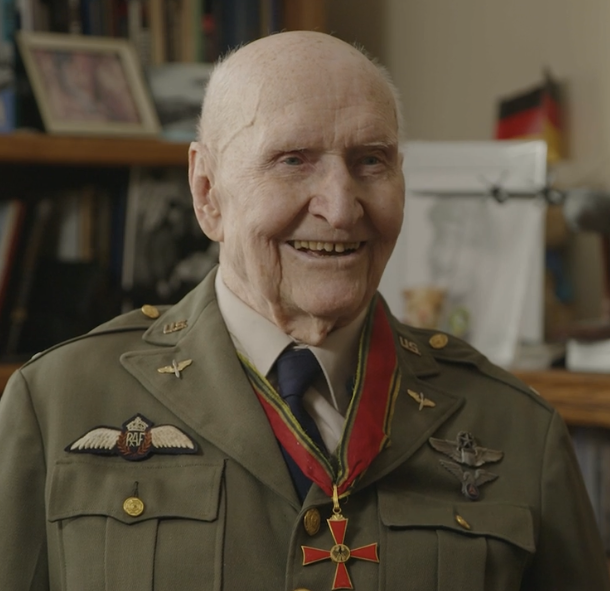We are pleased to announce that we’ve added the Gail S. Halvorsen “Candy Bomber” Collection to our archives. Fold3® is honored to be the official archive of the personal papers, journals, photographs, and videos of the late Col. Gail Seymour Halvorsen, also known as the Candy Bomber.
At the end of WWII, the Allies divided Germany into occupation zones. The US, UK, and France controlled the west, and the Soviets controlled the east. Berlin was within the Soviet zone, but Hitler’s formal capital was also divided into four sectors, with the US, UK, and France controlling three sectors and the Soviets controlling the fourth. Relations between the Allies and Soviets turned hostile, and on June 24, 1948, the Soviets blockaded all roads, rail lines, and water access to Allied-controlled areas of Berlin. In response, the US and UK began airlifting food and fuel to the starving residents of Berlin.
Halvorsen, a young pilot from Utah, participated in the food drops in a mission known as “Operation Vittles,” which delivered 2.3 million tons of food and fuel to the people of Berlin. One day, during the Berlin Airlift, Halvorsen noticed children standing at the fence at Tempelhof Airport. He wandered over and offered them two sticks of gum. He was humbled to see them divide the prize into tiny pieces for all to share. He promised to return and bring more candy. He told them they would know it was him because he would wiggle the wings of his aircraft when he landed. This was the humble beginnings of “Operation Little Vittles” and earned Halvorsen the nicknames “Uncle Wiggly Wings” and “The Candy Bomber.” Halvorsen’s actions helped turn former enemies into friends. By the end of the Berlin Airlift in 1949, crews dropped 23 tons of candy over Berlin.
Following Col. Gail Halvorsen’s death in 2022, Fold3® has worked with the Halvorsen family to digitize and preserve the records documenting his remarkable lifetime of service. We are pleased to announce that the “Candy Bomber” Collection is now available to explore for free on Fold3®. This collection contains Col. Halvorsen’s personal history, photographs, videos, resources for educators, memories from the Berlin children, and more.
Explore the Gail S. Halvorsen “Candy Bomber” Collection today on Fold3®.

























